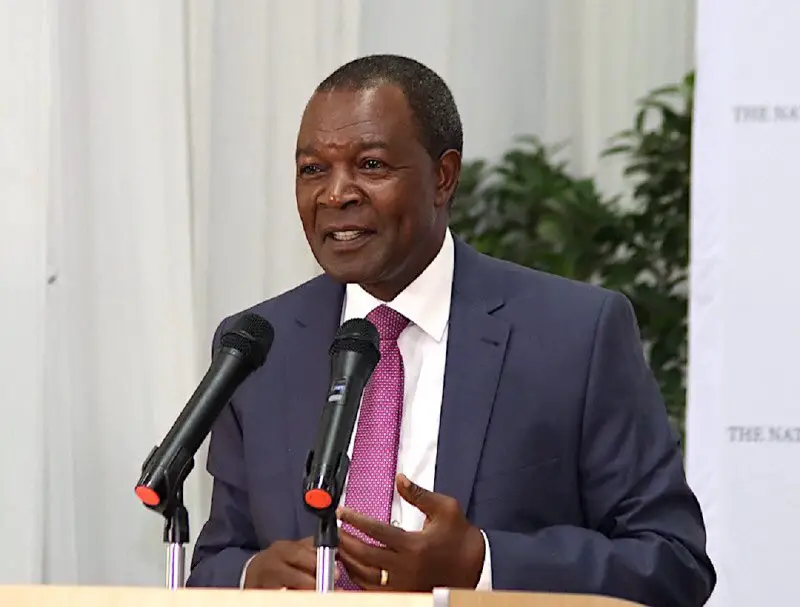- Kenya’s $2billion Eurobond was set to mature on June 24, 2024
- This is an increase of $1.31 billion (Sh168 billion) to reach US$8.32 billion (Sh1.07 trillion).
- Kenya had earlier indicated the outstanding amount would be retired through a mix of syndicated, multilateral & domestic financing.
Kenya has cleared the remaining $556.97 million (Sh71.5billion) of the $2billion (Sh257billion) Eurobond that was due by June 24, 2024. Figures by the National Treasury’s Public Debt Management Office indicate that says the outstanding note was settled on Friday, June 21, three days ahead of the maturity date.
The repayment has seen Kenya’s National Reserves move above the four-month statutory requirement for the first time in five months.
“The usable foreign exchange reserves remained adequate at $8.32 billion equivalent to 4.3 months of import cover as of June 20. This meets the CBK’s statutory requirement to endeavor to maintain at least 4 months of import cover,” said CBK in its weekly brief.
This is an increase of $1.31 billion (Sh168 billion) to reach US$8.32 billion (Sh1.07 trillion). In February, Kenya partially retired its note and re-entered the market with a new issuance. The government received tenders worth US$1.48 billion and accepted valid tenders totaling US$1.44 billion.
Kenya had earlier indicated the outstanding amount would be retired through a mix of syndicated, multilateral & domestic financing.
Kenya’s $2Billion Eurobond
The National Treasury in February confirmed that the country had successfully issued the new Eurobond with plans to buy back the inaugural one due on 24th June 2024.
The exchequer said the new loan that was meant to retire the maturing Eurobond was divided into three installments, with a weight average life of six years, and is expected to mature in 2031.
In December Kenya was forced to pay $68.7 million (Sh8.8 billion) in interest for the Eurobond of the $2 billion (Sh313billion) Eurobond.
The Parliamentary Budget Office (PBO) had earlier said that to fully repay the Eurobond, whichever liability management route the government opts for, whether a buyback or paying out from FX reserves, in the absence of a new Eurobond issuance, the government would need new funding from external markets.
The options included IMF, World Bank, and syndicated loans via multilateral agencies.
Read Also: IMF eases Kenya’s Eurobond pressure with $684 million loan
Kenya’s debt burden
Despite the repayments, Kenya’s debt situation remains a critical issue, reflecting both the opportunities and challenges faced by the country in its pursuit of economic growth and development. The total public debt has surpassed KES10 trillion ($70 billion), representing a significant increase over the past decade.
This mounting debt is attributed to various factors, including ambitious infrastructure projects, persistent budget deficits, and external economic pressures.
Kenya’s government has embarked on several large-scale infrastructure projects aimed at modernising the nation and stimulating economic growth. Notable among these is the Standard Gauge Railway (SGR).
Additionally, investments in energy, particularly in geothermal and wind power, have aimed to ensure sustainable and reliable electricity for both urban and rural areas.
However, these projects have largely been financed through external borrowing, contributing substantially to the rising debt levels.
The debt composition reveals a mix of domestic and external obligations, with a significant portion owed to multilateral and bilateral lenders. China remains a major creditor, primarily funding infrastructure projects.
Meanwhile, international financial institutions like the International Monetary Fund (IMF) and the World Bank have also provided substantial loans, often tied to structural adjustment programs and economic reforms.
The Kenyan government has been proactive in addressing the debt situation. Measures include fiscal consolidation efforts to reduce budget deficits, enhancing revenue collection through tax reforms, and curbing non-essential public expenditures.
The Central Bank of Kenya has also played a crucial role in managing the debt by implementing monetary policies that stabilize the economy and control inflation.
However, the debt burden poses several risks. High debt servicing costs, which consume a significant portion of government revenue, limit funds available for essential public services like healthcare, education, and social protection.
Moreover, the reliance on external debt late last year, exposed the country to exchange rate fluctuations and global economic uncertainties.
Despite these challenges, several market indicators maintain that Kenya’s economic outlook remains cautiously optimistic.
World Bank maintains that continued efforts to diversify the economy, coupled with prudent fiscal management, are essential to ensuring that the debt remains sustainable and that the country can achieve its long-term development goals.
Read Also: Kenya’s $1.5 Billion Eurobond Issuance Sparks Economic Optimism

